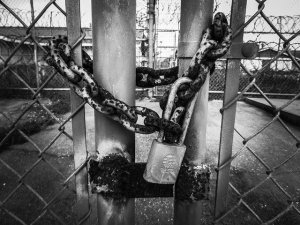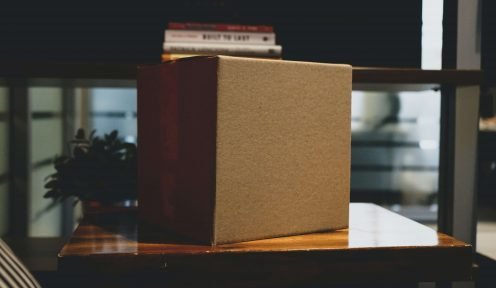
06.07.2021
Preventive Seizure
 Por
Castellano Gallego, Jesús
Por
Castellano Gallego, Jesús In order to access the preventive seizure it is necessary to prove 1) the existence of “Fumus Boni Iuris”, 2) “Periculum in Mora”, and 3) the granting of a Guarantee. And all three requirements must be met.
The preventive seizure is a precautionary measure. And as a precautionary measure it is extraordinarily and infrequently considered.
Contacto No te quedes con la duda, contacta con nosotros. Estaremos encantados de atenderte y ofrecerte soluciones.Liens in the event of non-payment of invoices
The non-payment of invoices is a recurring topic in our blog, and it has been awakened a lot of interest among our readers.
In this article we are going to deal with an issue that, if you are a creditor, is worresome: Do the Courts usually rule on liens in the event of non-payment of invoices?
If you have already decided to sue, you are probably wondering how to ensure the effectiveness of the resolution of your claim? How can you prevent the debtor from becoming insolvent during the judicial process? Well, that is what precautionary measures are for, to ensure the effective enforcement of the future judgment.
Our legal system provides for precautionary measures as a guarantee of effective judicial protection. The Constitutional Court, in its judgment 218/1994 of July 18, 1994, defines them as guarantors of effective judicial protection:
(…) The jurisprudential doctrine that has been consolidating is based on the premise that “judicial protection is not such without adequate precautionary measures that ensure effective compliance with the final decision handed down in the process” [STC 14/1992 (RTC 1992\14), legal basis 7.º]; (…)
Article 727 LEC establishes a broad list of precautionary measures.
Those foreseen for the purposes of claims for payment are the precautionary measures consisting of the preventive seizure of assets:
727.1st LEC: The preventive seizure of goods, to ensure the execution of sentences of condemnation to the delivery of amounts of money or of profits, rents and fungible things computable to cash by application of certain prices.
Apart from the cases of the preceding paragraph, the preventive seizure will also be appropriate if it is a suitable measure and cannot be substituted by another of equal or superior effectiveness and less onerous for the defendant.
In this sense, it is common for the plaintiff to seek seizure of current accounts, balances of suppliers in favor of the defendant, or of public institutions… (AEAT, TGSS).

Si te ha interesado este artículo no dudes en leer:
Execution and Garnishment
Requirements for precautionary measures: Fumus Boni Iuris, Periculum in Mora and Guarantee.
As we have been saying, the precautionary measures are justified by the need to act before the judgment is issued. This is in order to ensure their effectiveness in the event that the claims deduced in the lawsuit are upheld.
But at the time of requesting precautionary measures, it is incumbent upon the plaintiff to prove at the time of requesting them: 1) the existence of Fumus Boni Iuris, 2) the Periculum in Mora, and 3) the granting of Guarantee. These three requirements must be met, in accordance with the requirements of doctrine and jurisprudence.
Lets analyze in more detail each of these three figures:
1. Fumus Boni Iuris, or appearance of “prima facie” case:
Sufficient arguments must be presented for the Judge, without entering into the merits of the case, to assess the measures requested.
The fumus boni iuris consists in the evaluation by the Judge of these indications of legitimacy, “of good law”. If the plaintiff’s arguments are endowed with legitimacy, it will be justified its estimation.
The fumus boni iuris is regulated in article 728.2 LEC:
728.2. LEC: The applicant for precautionary measures must submit with its application the data, arguments and documentary justifications that lead to found, by the Court, without prejudging the merits of the case, a provisional and circumstantial judgment favorable to the basis of its claim. In the absence of documentary justification, the applicant may offer it by other means of proof, which must be proposed in the same document.
2. Periculum in Mora:
The second requirement demanded by doctrine and jurisprudence, for the granting of a precautionary measure, is the “periculum in mora”.
It requires that the plaintiff express the need for the measures to ensure compliance with the judgment. Justifying that if the precautionary measures are not granted, there is a real risk that the judgment will not be effective. This constitutes a “periculum o mora” or “Danger due to procedural delay”.
Article 728.1 LEC refers to periculum in mora:
Precautionary measures may only be granted if the person requesting them justifies that, in the case in question, situations could arise during the pendency of the proceeding, if the requested measures were not adopted, that would prevent or hinder the effectiveness of the protection that could be granted in an eventual favorable judgment.
Precautionary measures will not be granted when they are intended to alter factual situations that have been consented to by the applicant for a long time, unless the applicant fully justifies the reasons why such measures have not been requested until then.
3. Guarantee:
And finally, doctrine and jurisprudence require a counter-guaranty to ensure the eventual damages that the precautionary measure could cause. The security is provided in favor of the plaintiff, in the event that the claim is finally dismissed. It must be sufficient to guarantee the damages that may be caused to the patrimony of the person who supports the precautionary measure. And it must be granted at the time the precautionary measure is requested. Be careful with the latter, since the adoption of the precautionary measures is subordinated to the payment of the security.
It is regulated in article 728.3 LEC:
(…) Unless expressly provided otherwise, the applicant of the precautionary measure must provide sufficient security to respond, quickly and effectively, for the damages that the adoption of the precautionary measure could cause to the assets of the defendant.
The Court shall determine the security in accordance with the nature and content of the claim and the assessment it makes, in accordance with the preceding paragraph, of the grounds for the request for the measure. (…)
It can be concluded once again that the precautionary measures are a way to ensure the future judgment. In the case of claims for payment, they seek to ensure that the debtor does not decapitalize to the detriment of the creditor. By means of the precautionary measures of seizure, seizures are sought on balances in favor of the debtor, as a guarantee of the judgment.
Statistics on Preliminary injunctions
The following are the most frequent percentages of cases of dismissal of precautionary measures in Spain. Correspond to the year 2006/2007. Data published by the Barcelona Bar Association. It belongs to the work “Los Criterios Jurisprudenciales de Adopción de las Medidas Cautelares” (Jurisprudential Criteria for the Adoption of Precautionary Measures). By Mr. Vicente Pérez Daudí. Professor of Procedural Law. University of Barcelona.
Case law year 2006 – 2007.
| Spain | |
| Total Court Resolutions | 201 |
| Total favorable rulings | 82 (40,79%) |
| Discouraging rulings | 119 (59,20%) |
| Due to procedural reasons (improperly requested or without the offering of guarantee) | 31 (15,42%)
|
| Lack of “Fumus Boni Iuris” | 42 (20,89%)
|
| Lack of “Periculum in Mora” | 46 (22,88%) |
If this article has been of interest, we also suggest you to read the following article published on our website:












